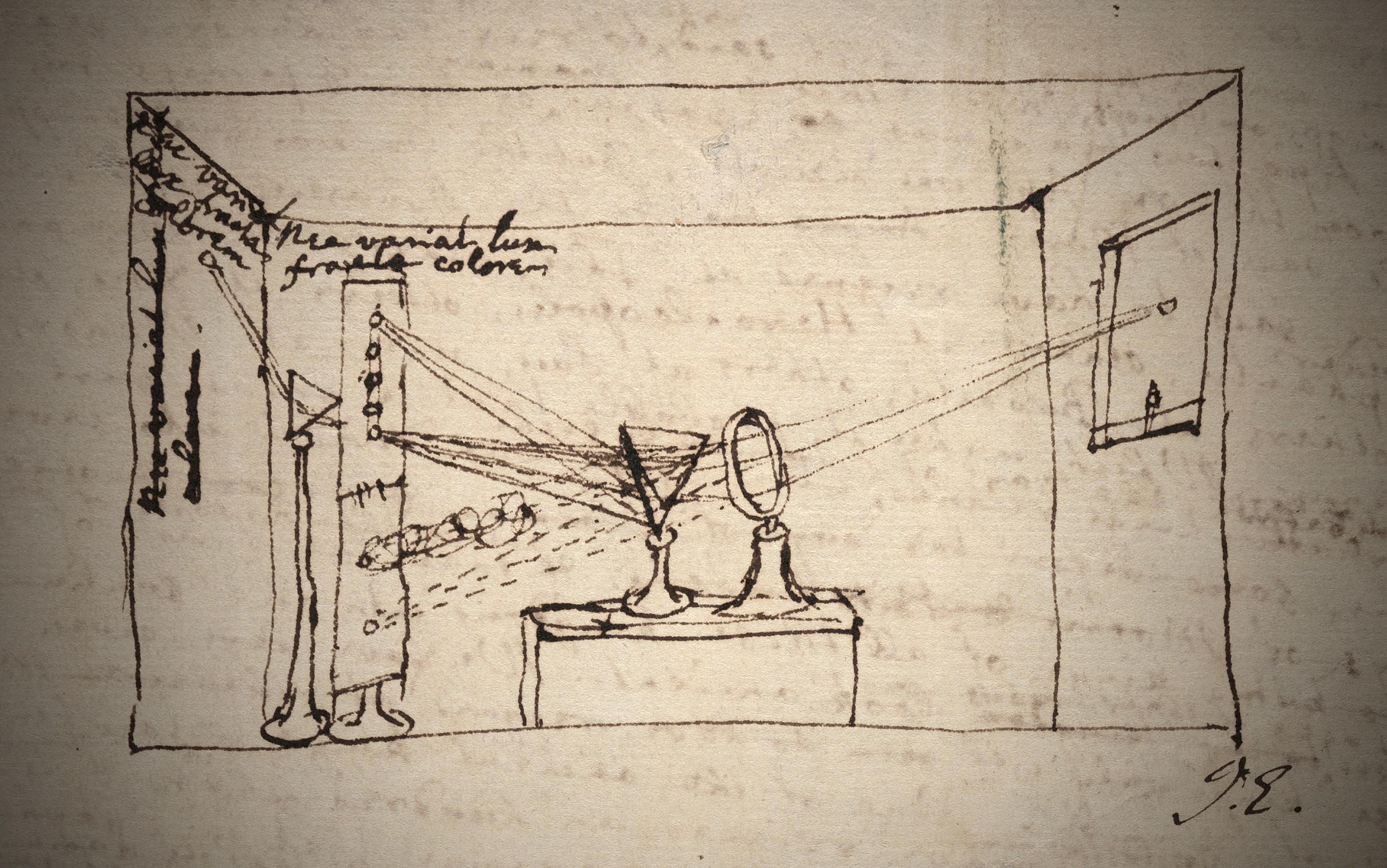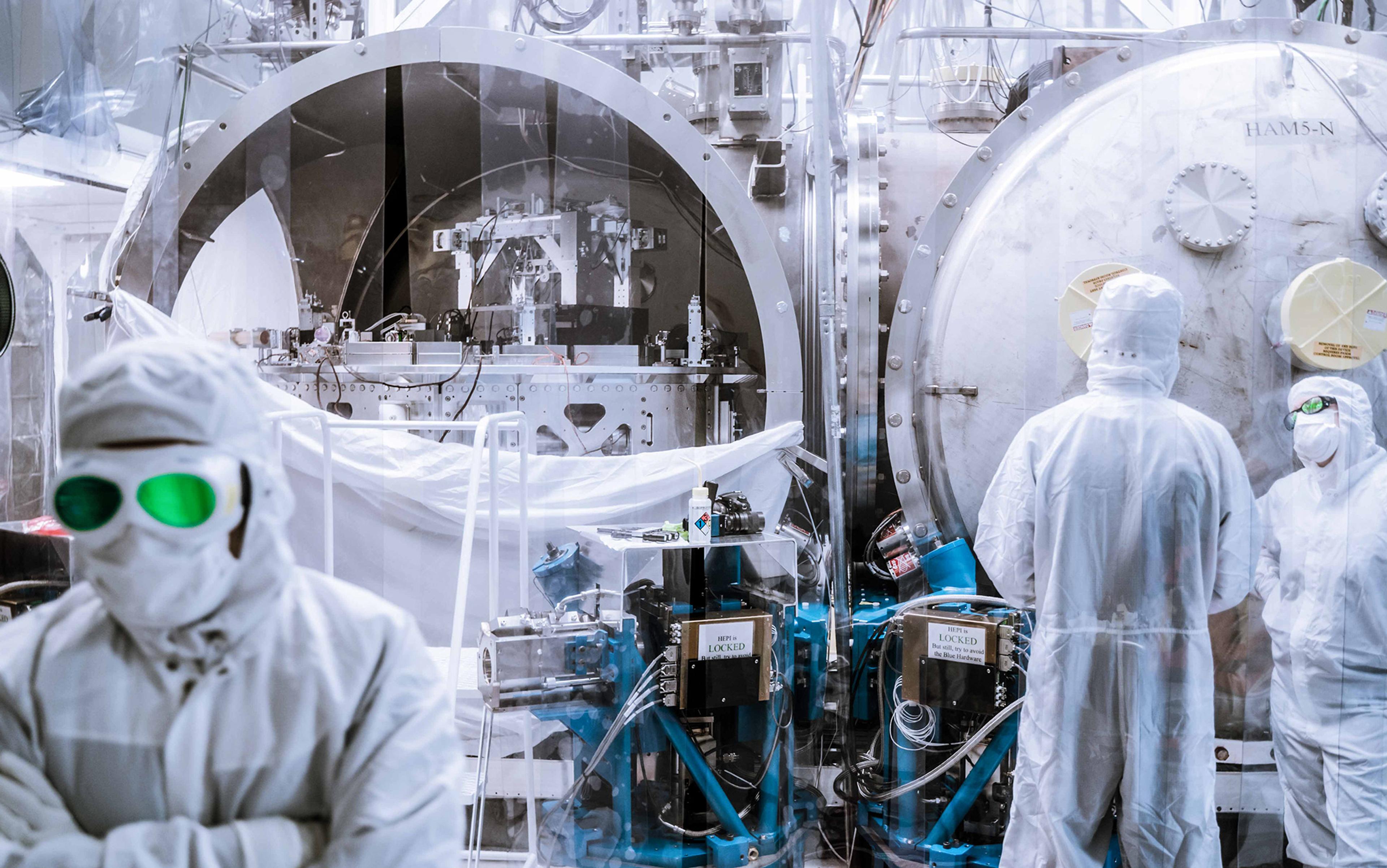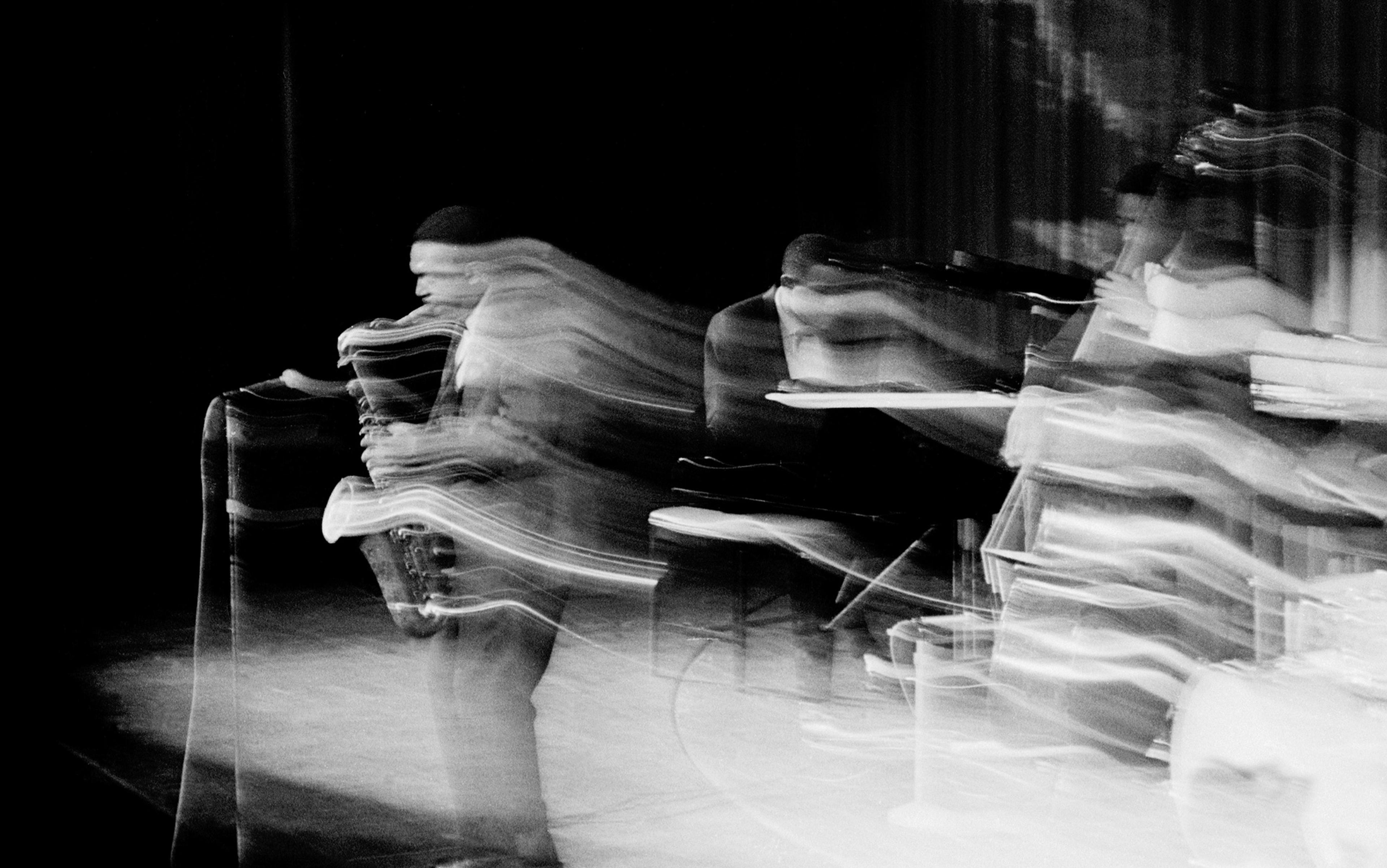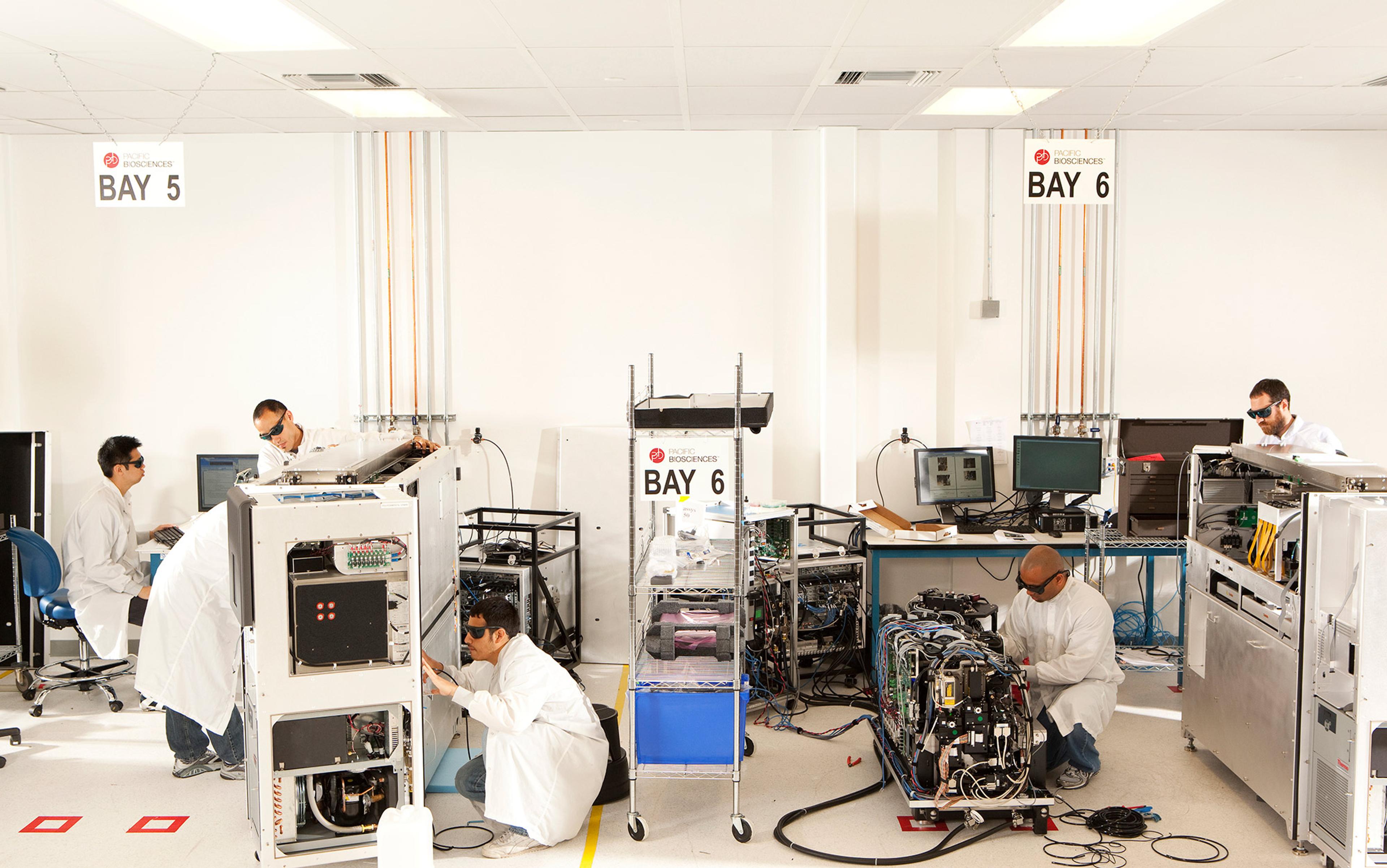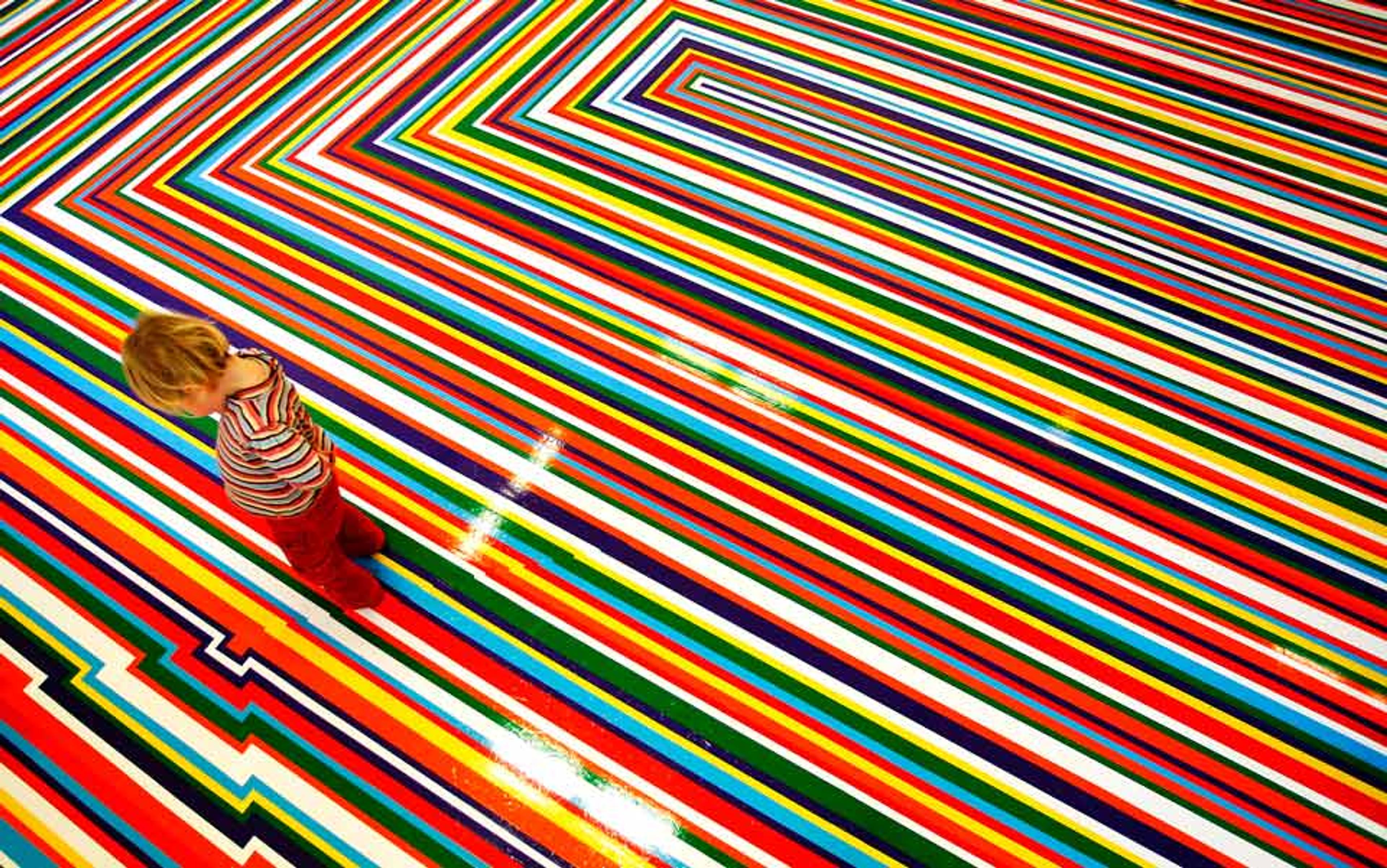There is a long tradition among scientists of comparing scientific models, images, theories and experiments to works of art. We are told that Albert Einstein’s theory of relativity, the double helix structure of DNA molecules, and images of colliding particles are beautiful, and that, just like works of art, they evoke in us aesthetic responses. Scientists themselves, like artists, are praised for their creativity, originality and aesthetic sensibility. Einstein, for one, regarded the American physicist Albert Michelson, who with Edward Morley co-designed the experiment to measure the velocity of Earth relative to the ether, as ‘the Artist in Science’, claiming that not only did Michelson care for devising a good experiment, he wanted his creations to be beautiful too.
So what does it mean for an experiment to be beautiful? Let us start with the example of Foucault’s pendulum, which allows us to illustrate three important ways in which an experiment can be beautiful. In 1851, the French physicist Léon Foucault devised a way of demonstrating that Earth rotates on its axis. He hung a heavy metal weight from a long cable fixed to the inside of the dome of the Panthéon in Paris. When he set this pendulum in motion, it slowly swung back and forth, tracing lines in sand placed beneath it. After some time, it became clear that the traces were not all in one line because of Earth’s rotation beneath the pendulum.
This pendulum was beautiful in an obvious visual sense – as a kind of kinetic sculpture with an almost mesmeric, slow, back-and-forth movement. Scientific equipment can indeed be beautiful, and often is. Take, for instance, chemical retorts, prisms, microscopes and complicated structures built in laboratories. Museums house beautifully crafted scientific instruments and equipment from the past because we can appreciate their aesthetic features. The phenomena we study in the experimental setup – such as copper sulphate crystals, rainbows produced by prisms, and the microscopic structure of cells – can be beautiful too. But what made Foucault’s pendulum a beautiful experiment is more than its visual beauty. Far more importantly, it showed the effects of Earth’s rotation, something important that hadn’t been demonstrated before, and it did this in a clever, imaginative and elegant way. The pendulum itself was beautiful, but the ultimate beauty of the experiment is a combination of its significance and its design.
It’s hard to identify the most beautiful experiment in science, but one of the most beautiful in biology was designed by the American geneticists Matthew Meselson and Franklin Stahl to discover how DNA replicates. What is it about this experiment that makes it beautiful? To understand this, first let us reflect on what the experiment set out to do. It was performed only a few years after one of the most exciting scientific breakthroughs of the 20th century: the discovery in 1953 of the double helix structure of DNA. With the structure of DNA established, the next question the scientific community needed to address was how DNA replicated. There were already three different hypotheses proposed: 1) conservative replication, according to which each of the two strands of the parent DNA molecule are replicated in the new one; 2) semi-conservative replication, according to which one strand of the parent DNA is conserved in the daughter DNA; and 3) dispersive replication, according to which the parent DNA chains break at intervals, with the parental segments combining with new segments to form the daughter DNA. Meselson and Stahl set out to give an answer to the question of how DNA replicates by designing an experiment that would decisively discriminate between the three proposed hypotheses.
In 1958, the two scientists published the results of that experiment. What they had done to determine the correct hypothesis on DNA replication was to feed bacteria nutrients containing a heavy nitrogen isotope that gets incorporated into the bacterial molecules through metabolising. They studied the genetic material through the next generations, knowing the rates at which bacteria multiply. Instead of using radioactive labelling of the DNA strands, which was common at the time, they decided to use density, and separated the heavy DNA from the light using density-gradient centrifugation. By studying the ratios of light, heavy and hybrid DNA that they obtained, Meselson and Stahl were able to eliminate the conservative and dispersive replication hypotheses, confirming that DNA in fact replicates semi-conservatively.
A further aspect of its aesthetic value is not only what this research taught us but also how it did so
One of the reasons why this experiment is celebrated in science is because it is an example of an experimentum crucis, or a ‘crucial experiment’. Such experiments are important; they deliver a decisive answer to a question. Usually, an experiment is considered crucial when it confirms a hypothesis among alternative competitors, and thus settles a dispute. It is from this ability to deliver a decisive answer to the question of how DNA replicates that the Meselson-Stahl experiment can be considered to derive its beauty. The results are taken to have been clear and straightforward, to have decisively spoken in favour of one of the contender hypotheses, and to have dismissed the alternatives. In his book Beauty and the Beast (1999), the German historian of science Ernst Peter Fischer argues that ‘the Meselson-Stahl experiments speak … for themselves and made all further commentary superfluous’. In his history Meselson, Stahl, and the Replication of DNA (2001), Frederic Lawrence Holmes further argues that the simplicity and clarity of the result makes this experiment easily presentable even to students, serving as an exemplar experiment for science education.
The above considerations focus on what the Meselson-Stahl experiment did, the significance of its results, but a further aspect of its aesthetic value is not only what this research taught us but also how it did so, and this later consideration concerns its design. The Meselson-Stahl experiment is regarded as having an elegant and apt design that is optimally suited for the purpose it set out to achieve. Following the reasoning behind their experimental setup reveals the ingenious beauty of the design that the scientists created. By making the genetic material initially heavy and then light, Meselson and Stahl could extract and measure its weight through the next generations. It is this idea that makes their design original and elegant, and they used the optimal materials and techniques for the job. As such, their simple experiment integrates innovative and creative thinking, and shows aptness by delivering on what the elegant experiment was designed to do, by conclusively deciding which hypothesis was correct.
Having established that the beauty of experiments lies in the elegance and simplicity of their design, the significance of their results and the creative thinking of their designers, I now want to consider whether these aesthetic ideals have carried over to contemporary experiments in science.
There is a clear asymmetry between experiments of a century ago and experiments today. Past experiments, such as the Meselson-Stahl experiment, often involved a few scientists in a room, relatively cheap equipment, and generally the results could be perceived or established without lengthy interpretative work. Experiments today look rather different. Take, for instance, CERN’s experiments at the Large Hadron Collider (LHC) near Geneva, which not too long ago made one of the most significant discoveries in the history of particle physics: the detection of the Higgs boson that was predicted by the Standard Model. This experiment involves highly complex machinery (which has its own kind of beauty) and data analysis; it is the result of collaborative work between thousands of scientists; and the very boundary of the experiment transcends the borders of countries. Given their complexity and size, do large-scale experiments fit with previous aesthetic ideals? Have they become aesthetically disvalued, or can they still be praised for their aesthetic features?
It is undeniable that such contemporary experiments are highly complex: from the machinery they use to the data they produce, they can overwhelm with their size and setup. However, perhaps there is still scope to assign a similar aesthetic value to them as to experiments from a century ago. It seems to me that, despite the complexity behind large-scale experiments, design and aptness continue to be the subject of aesthetic appreciation, and so is the creativity and originality exhibited in the experiment’s design. This is despite the fact that the creativity exhibited in the experimental design is now better ascribed to the collective thinking of the community, rather than necessarily to a specific individual, and the optimality and aptness of the design is concealed beneath the complexity of the experimental setup and the machinery involved.
The appreciation of beauty in science, and in art, is not necessarily immediate to us
Even if we could make the argument that similar aesthetic features get praised during different experimental traditions, there is a further difference between experiments from a century ago and those of today that perhaps should force us to reconsider the claim of similarity. The difference concerns the way in which we arrive at experimental results. As mentioned earlier, one of the aspects we can appreciate in the experiments on DNA replication is their immediacy: we can observe the results in a ‘singular historical event’, as Holmes noted. Such immediacy was characteristic of many, although certainly not all, early experiments. Let’s go back to the experiments that natural philosophers performed with the air pump, which allowed them to study many phenomena with a newly invented instrument that could extract air from a cylinder.
As the painting An Experiment on a Bird in the Air Pump (1768) by Joseph Wright of Derby depicts, one could immediately perceive the effect on the living creature when the air from the cylinder was extracted using the air pump, which in turn generated a variety of responses in the audience, from fascination and awe to terror. Similarly, we can see the rainbow through Isaac Newton’s prisms, and we can see the bands of light-, heavy- and intermediate-density genetic material in the Meselson-Stahl experiments.

An Experiment on a Bird in the Air Pump (1768), by Joseph Wright of Derby. Courtesy the National Gallery, London
But is there anything immediate when it comes to detecting particles and forces in a huge particle accelerator such as those detected by the LHC? Is there any sense in which the experimenter perceives the result in a ‘singular historical event’? Large-scale experiments often involve lengthy statistical data analysis before the experimental scientists can agree whether the data collection indicates an ‘event’ and whether the event constitutes a discovery. But this asymmetry between experiments with immediately perceivable results and those whose results involve time-consuming analysis, while noteworthy, is not surprising. It simply shows us that the appreciation of beauty in science, and in art, does not always involve perceptual features, and the aesthetic response is not necessarily immediate to us. After all, while many paintings and sculptures might evoke in us an immediate aesthetic response, this is certainly not necessary, and is certainly not the case when we consider artworks such as novels and concertos. We need some time and work to get through an entire novel or a concerto before we can fully appreciate its beauty and aesthetic significance more generally. Similarly with the results of many, especially very complex, experiments, it is ultimately the appreciation of the interplay between design and the significance of the result that provokes the aesthetic response.
So far, we have seen that design is an integral part of our aesthetic appreciation of experiments, but we also seem to value those experiments that did something important: whose results helped to confirm a theory or to make a discovery. A final point I want to explore is how we can understand the significance of experiments that produce null results – can such experiments be beautiful too? Both the abovementioned experiments – the Meselson-Stahl and the Michelson-Morley – were highly original and elegant in their design. But while the former helped confirm the nature of DNA replication, the latter did not deliver on what it was designed to do: the interferometer never detected ether drift, despite continued attempts. Is the Michelson-Morley experiment then disqualified from being beautiful, because of the null results?
I have argued that our understanding of what qualifies as a successful experiment needs to be much broader than simply its confirmation of a hypothesis or its discovery of a predicted particle. For example, the existence of the ether was once an undisputed assumption, until Michelson and Morley set up their incredibly careful experiment, which showed creativity and imagination in its elegant design. Even though it turned out that there is no such thing as an ether, their null results challenged accepted beliefs at the time and prompted the exploration of a new paradigm. So the Michelson-Morley experiment is beautiful because it offered the most elegant way to achieve its goal: the two scientists exhibited original and creative thinking, inventing one of the period’s most precise measurement devices, and delivering an experiment of insurmountable scientific import.
Contrary to Meselson and Stahl, who did deliver an answer aligning with scientific expectation, the results of the Michelson-Morley experiments were disruptive. But it is this disruptive nature of their results that prompted the identification of the limitations of our knowledge and opened the door to revisit and reformulate our physics, leading to the acceptance of Einstein’s special theory of relativity and the abandonment of the Newtonian framework. The design was beautiful, the setup careful and original, and the results were disruptive, surprising and awe-provoking. Just like many artworks that challenge our fundamental assumptions about ourselves and our place in the world, beautiful experiments can deliver results that prompt us to reconsider our working assumptions. Their aesthetic significance is intricately related to our state of understanding, and illustrates the diverse nature of the aesthetic experiences that scientific products and artworks can elicit.
